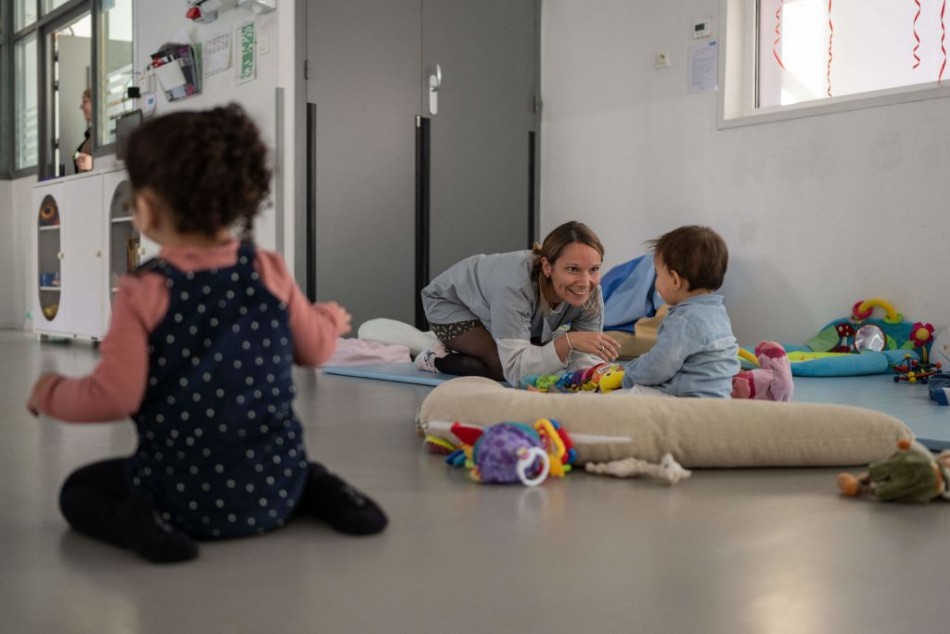When Do Babies Sit Up: Strategies and Timing to Facilitate Skill Development in Infants

The developmental milestones of your baby's first year are likely passing swiftly, and the ability to sit up is a particularly thrilling achievement.
This skill not only introduces a new realm of play and exploration but also enhances mealtime convenience and provides a different perspective of the surroundings for your baby.
Some signs indicate that your baby may be ready to sit when they exhibit good head control, display controlled and purposeful bodily movements, push themselves up when lying face down, and may have started rolling over.
Facilitating the Sitting Up of Baby
In the initial stages, your baby may sit for short periods when positioned upright, requiring support to prevent falls.
Around 7 to 9 months, babies approaching independent sitting are likely to roll in both directions and may even start scooting in preparation for crawling. Some babies experiment with a tripod position, using one or both hands for support.
To aid your baby's sitting development, offer ample opportunities for practice. Encourage trial-and-error experiences, engage in floor play with age-appropriate toys, and spend time sitting with your baby for activities like reading or singing.
Tummy time is crucial for sitting development, and gradually increasing the duration can be beneficial.
Regarding baby seats like the Bumbo Seat, they are designed for stability in specific situations, such as feeding, rather than skill development.
Using such seats too early or for extended periods may interfere with your baby's natural development. It's recommended to wait until your baby is closer to the sitting milestone, typically between 6 and 8 months, and not to rely solely on the seat for practice.
Sitting Up as a Milestone in Baby's Development
The significance of a baby sitting up lies in fostering independence and enabling exploration of their surroundings in new ways, as stated by Dr. Sheryl Pitner, an assistant professor of pediatrics at the University of Nebraska Medical Center.
This milestone also serves as a precursor to essential developmental stages such as starting solids, crawling, standing, and walking.
Read Also: When Do Babies Start Crawling: Recognize the Signs as They Reach This Milestone
Muscle Development in Learning to Sit
In the process of learning to sit up, babies engage their gross motor skills, requiring strength in various muscles, including the neck, shoulders, stomach, back, and hips, according to Dr. Jean Moorjani, a pediatrician at Arnold Palmer Hospital for Children.
The mastery of sitting with minimal support indicates the development of muscle control necessary for transitioning to solid foods, as highlighted by Dr. Moorjani and the American Academy of Pediatrics.
Babies typically begin sitting up between 4 and 7 months, contingent upon the development of specific large motor skills, according to pediatrician Dr. Kurt Heyrman.
Tummy time, involving placing the baby on their stomach, is emphasized for developing head control, and researchers have observed a positive correlation between tummy time and overall milestone achievement.
Muscle development occurs progressively, with strengthening starting from the neck and extending to the upper and lower back.
Learning balance is crucial for sitting alone, and various activities like placing the baby in the corners of chairs or couches can assist in developing this skill. As the baby grows stronger, they will be able to sit for short durations, initially lasting only a few seconds.
The tripod position, where the baby uses their arms as a support, is a common phase in the sitting development process.
Continuous improvements lead to longer sitting periods and eventually set the stage for crawling. Safety measures, such as child-proofing the environment, become crucial once the baby can sit alone.
Products like Boppy pillows and Bumbo seats should be used cautiously, with supervision, as they may limit natural movements.
If a baby hasn't started sitting up by around 6 months, it is essential to remain patient as each baby develops at their own pace. However, if there's a lack of progress by 9 months, it is advisable to consult with a pediatrician.
Overall, supporting the baby with proper nutrition, sufficient sleep, and encouragement will contribute to the successful achievement of the sitting-up milestone.
Related Article: When Do Babies Roll Over? Safety Tips for New Parents
© 2024 ParentHerald.com All rights reserved. Do not reproduce without permission.
